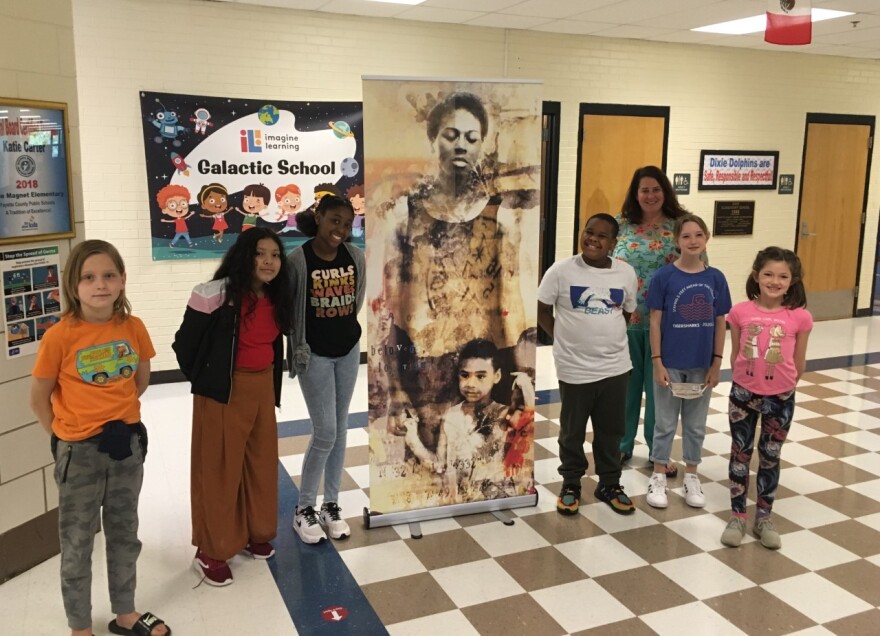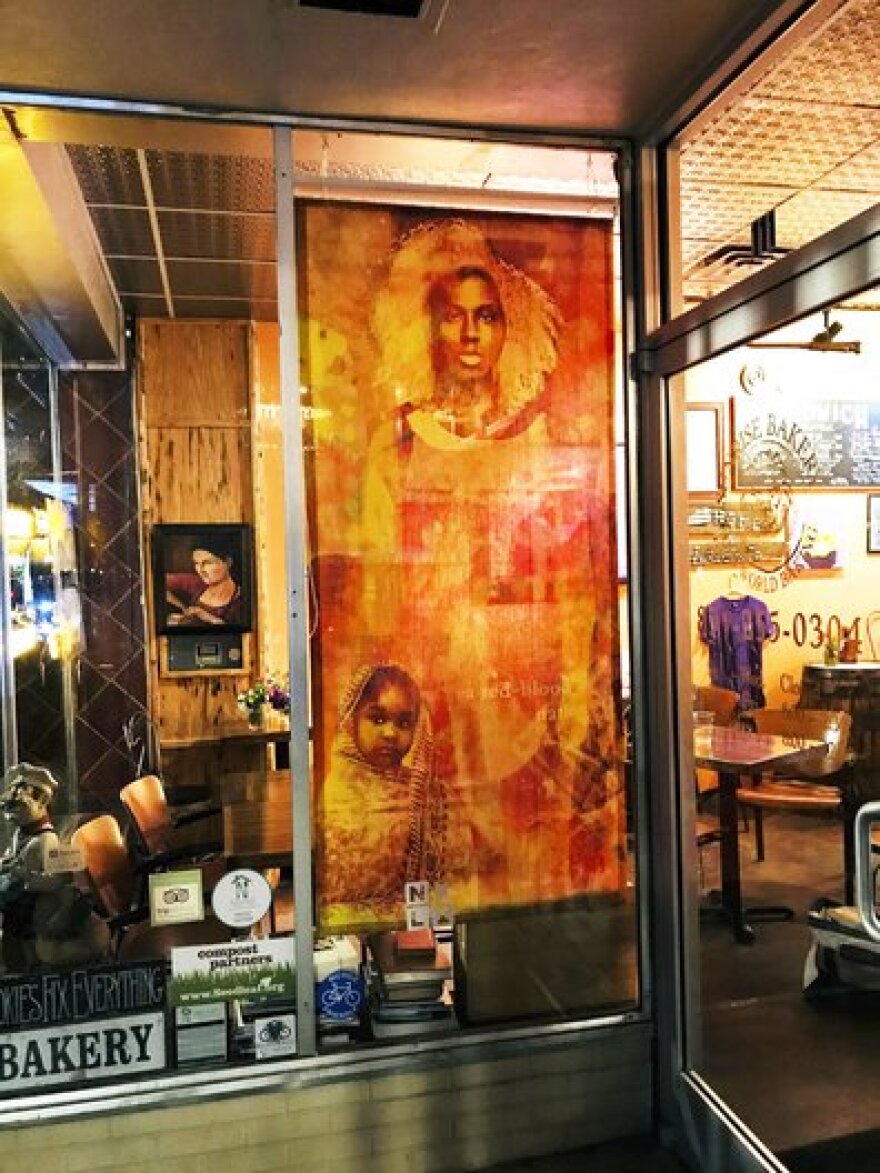Hundreds of school children in Lexington have been brought face-to-face with ancestral slavery in the hope that it provides a new form of understanding. The opportunity came through a combination of elementary art instruction and Lexington public art.
"I Was Here" was birthed in 2016 by Lexington artist Marjorie Guyon. In her mind’s eye she saw a mother and son in what was once Lexington’s slave-trade area, Cheapside. Guyon got the idea for translucent ancestor 'spirit' portraits, eventually more than 20, positioned in public windows. “The first step of the project was thinking of it. The second step of the project was finding the people that would be the emblematic ancestor models and then having Patrick do the photo shoot and then creating these iconic images out of them,” said Guyon.

The photographer was Patrick Mitchell. Guyon said the process involves a synthesis of photography and collage. She said it’s an outdoor project which can stir thought and solicit reaction from those who might not be museum goers.
"I Was Here" Community Liaison Marshall Fields said the ancestor spirit portraits create a way for citizens to see themselves in, “parts of the past that have been historically mis-represented.” Fields explained, "Part of the great healing process is to reshape how we view one another as citizens and it can’t be forced. We’ve tried to force it in the past and there have been many laws that have been made and unmade."
"I Was Here" made its way into the Fayette County School System under the tutelage of Dixie Elementary Art Instructor Rachel Losch. Losch said more than 500 children at the Lexington school were introduced to the spirit portraits of enslaved Africans.
“Even down to kindergarten I felt like, especially some of the images with the younger children in the pictures, that they could related immediately and imagine that they were in the picture. I just thought that it was time to do it. I wasn’t go to shy away from it,” said Losch.
Losch said she was, “moved by it and knew that there was a need for a shift that was gonna create monumental change in our community." She said it couldn’t be done without the students because they are the future.

Here is a sampling of reactions from six Dixie Elementary students, ranging in age from seven-to-eleven. In order, they are Zaria Barber, Evie Jarvis, Miranda Soto, Sawyer Bentley, Josie Mayer, and King El-Amin.
“When I first saw this picture I felt really sad because they looked like something happened to them and they weren’t very happy. And the mom looked like she was trying to stay strong for her kid….I just felt really sad because it felt like the mom and the child were in some danger….The mother looked like she was holding back tears from what have happened to her and her son and that they’ve been through a lot….This boy had like maybe a hard time being born and the mom is trying to save him from something because he’s struggling and trying to keep alive….It just takes you back to the old times downtown because there was like a racist, there were racists downtown and they sold black people and she was trying to protect her child from being sold. That’s what it looks like now….I just thought that a bunch of people were not happy. They needed help and they couldn’t find their self in their own world.”
Parents of these children were also impacted by the experience. Samantha Johnson said, knowing the artist and those represented in the artwork, she appreciates the in-depth look into the history of the community. “The images that are depicted there in each of the pieces of art I think speak volumes to our ancestors, to the spirituality of our community where we come from and how far we’ve come,” said Johnson.
Although the art depicts ancestral spirits, Johnson called the artwork a futurist piece that gives her hope for the future.
Hilary Jarvis said it provided a doorway for a conversation with her seven- year-old. “It helped me tell the history of Lexington to my daughter in a way that put faces to what actually happened here and the lost history,” said Jarvis.
Art teacher Rachel Losch said the plan is to see this experience played out at other Lexington area schools next year. But first, on June 26 at Whitaker Bank ballpark, Dixie students and their parents are invited for the debut of a soundscape which integrates the American National Anthem with the African American Anthem.
Artist Marjorie Guyon and "I Was Here" Community Liaison Marshall Fields said it is not a finished work. This summer, an augmented reality app is expected allow cell phone users to view large portrait images on the sides of Lexington’s historic courthouse. And Guyon said there are also plans to launch the "I Was Here" concept nationally in the months ahead.
Guyon and Fields both say the aim is more than thought-provoking public art, but a shift in community policies as well.
Editor's Note: At the request of the artist some changes have been made to this story in the interest of accuracy. The word slaves has been replaced with enslaved Africans. The word project has been replaced with words that better describe the artist's work.












